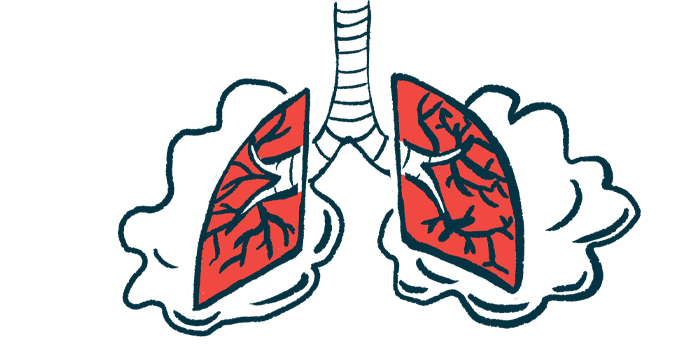Researchers Test Prognostic Value of Breathing Reserve

Breathing reserve, a measure of lung function calculated during exercise, predicted survival in adults with congenital heart disease associated with pulmonary arterial hypertension (PAH), a study reported for the first time.
Breathing reserve assessment in other diseases affecting blood vessels in the lungs also may predict survival outcomes, the scientists noted.
The study, “Exercise ventilatory reserve predicts survival in adult congenital heart disease associated pulmonary arterial hypertension with Eisenmenger physiology,” was published in the International Journal of Cardiology Congenital Heart Disease.
Congenital heart defects seen at birth can cause PAH, a condition characterized by increased blood pressure (hypertension) due to narrowing of the pulmonary arteries that transport blood through the lungs.
When a congenital heart defect goes unrepaired, the pulmonary arteries can be damaged due to the abnormal blood flow between the heart and lungs — a condition called Eisenmenger syndrome.
Adults who have PAH associated with Eisenmenger syndrome experience more severe limitations on exercise, and live with a higher risk of morbidity and mortality than congenital heart disease patients without Eisenmenger syndrome.
Breathing reserve (BR) is a measure of lung function calculated during a cardiopulmonary exercise test to assess the performance of the heart and lungs.
BR is the difference between the maximum amount of air inhaled and exhaled during peak exercise and the maximum voluntary ventilation (MVV), which is the largest amount of air that a person can inhale and exhale over 12 to 15 seconds. Healthy adult males have a BR of at least 11 L per minute at peak exercise or 30–50% of the MVV.
A 30% or lower BR relative to the MVV is typically used as a cut-off value that reflects breathing limitations during exercise and may indicate impaired lung function due to underlying diseases.
However, whether BR can be used as a marker to predict PAH outcomes (prognosis), particularly in those with Eisenmenger syndrome, remains unaddressed.
Researchers at the Royal Brompton Hospital in the U.K. tested the prognostic value of the breathing reserve during exercise in a group of 50 adults with Eisenmenger syndrome and 50 age- and sex-matched patients with idiopathic PAH (IPAH), or PAH with unknown cause.
“To our knowledge, this is the first description of the prognostic value of BR in patients with [Eisenmenger syndrome] and IPAH,” the team wrote.
Overall, the individuals with Eisenmenger were younger, had significantly lower peak oxygen intake, and had lower blood oxygen saturation. In addition, the Eisenmenger group had higher Ve/VCO2 slopes (ratio), which signified worse ventilatory (breathing) efficiency than the IPAH group. Notably, “Ve” is minute ventilation (how much air moves into and out of the lungs in a minute) and VCO2 refers to carbon dioxide production.
All participants were being treated with vasodilators, which are medicines that dilate blood vessels and reduce blood pressure.
At peak exercise, 25 Eisenmenger patients (50%) and 15 of those with IPAH (33.3%) had a breathing reserve of 30% or less.
In the Eisenmenger group, the 10-year survival rate (without transplant) was 48% in patients with a BR of 30% or less, versus 72% in those with a BR higher than 30%. A BR 30% or below was associated with a 3.4-times higher mortality risk than a BR above 30%.
Among the IPAH patients, there was no significant difference in survival based on BR measures. The researchers noted that follow-up duration was shorter in this group.
Notably, in the Eisenmenger group, the median BR cut-off of 31% calculated from data in this study was similar to the widely used prognostic cut-off of 30%.
Prediction analysis found a high cardiothoracic ratio — diameter of the heart divided by the width of the chest — was associated with a 2.2-times increased risk of a BR of 30% or lower, confirming “the significant contribution of lung restriction to decreased BR in this patient population,” the researchers wrote.
Further, a 1.9-times higher risk of a low BR was linked with moderate-to-severe lung function decline, as measured by the amount of air forced from the lungs in one second or the total amount of air exhaled.
Correlation calculations reinforced the relationship between cardiothoracic ratio and BR, and also showed a connection between low BR and higher Ve/VCO2 slopes. A weak correlation was found between a low peak exercise oxygen saturation and BR.
There were no other clinical or heart-related predictors of a low BR, “however the results are based on a restricted set of patients and should therefore be interpreted cautiously,” the researchers noted.
“The assessment of BR during exercise in other forms of pulmonary vascular disease should be explored to ascertain any additional prognostic value,” the investigators wrote.








